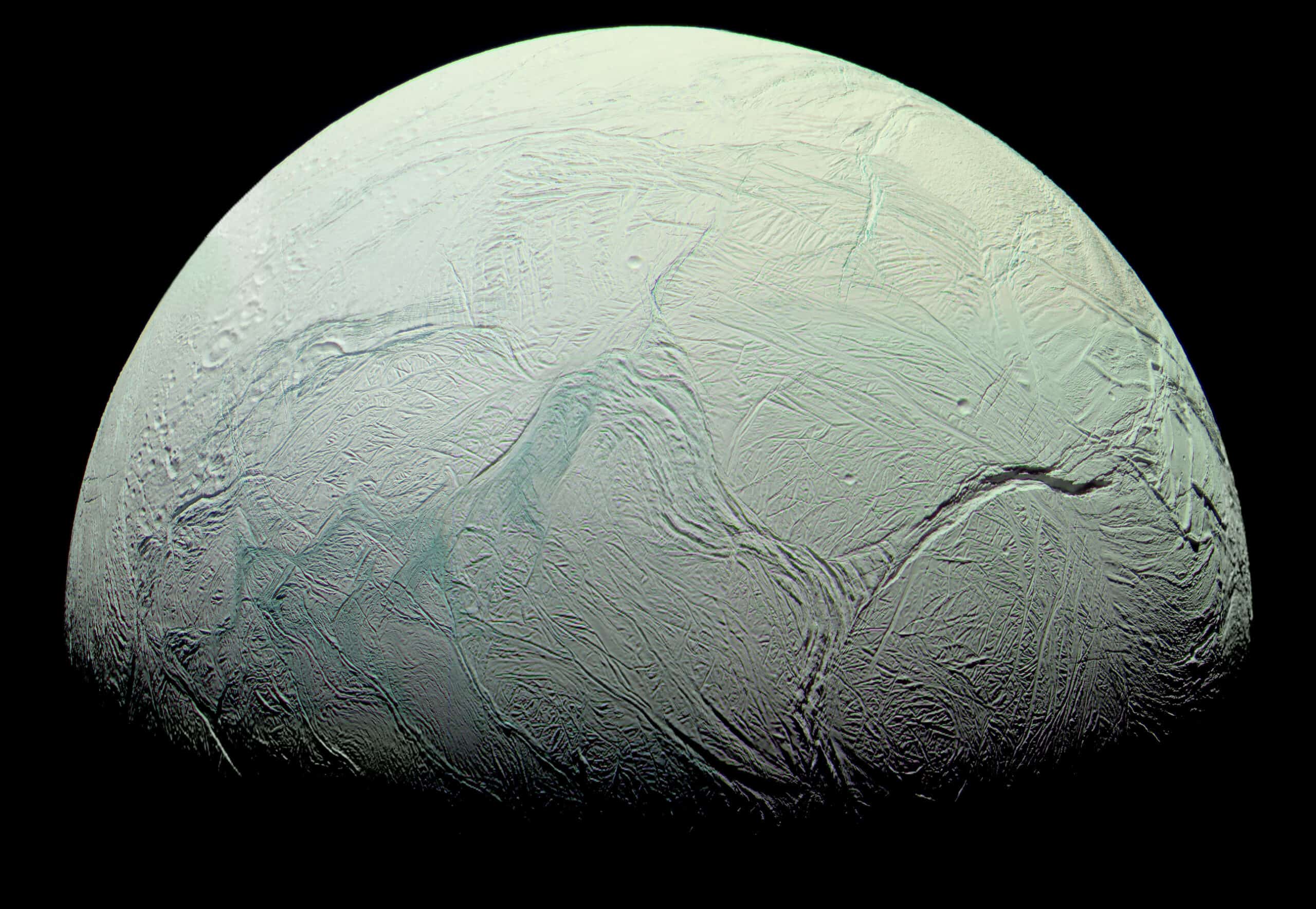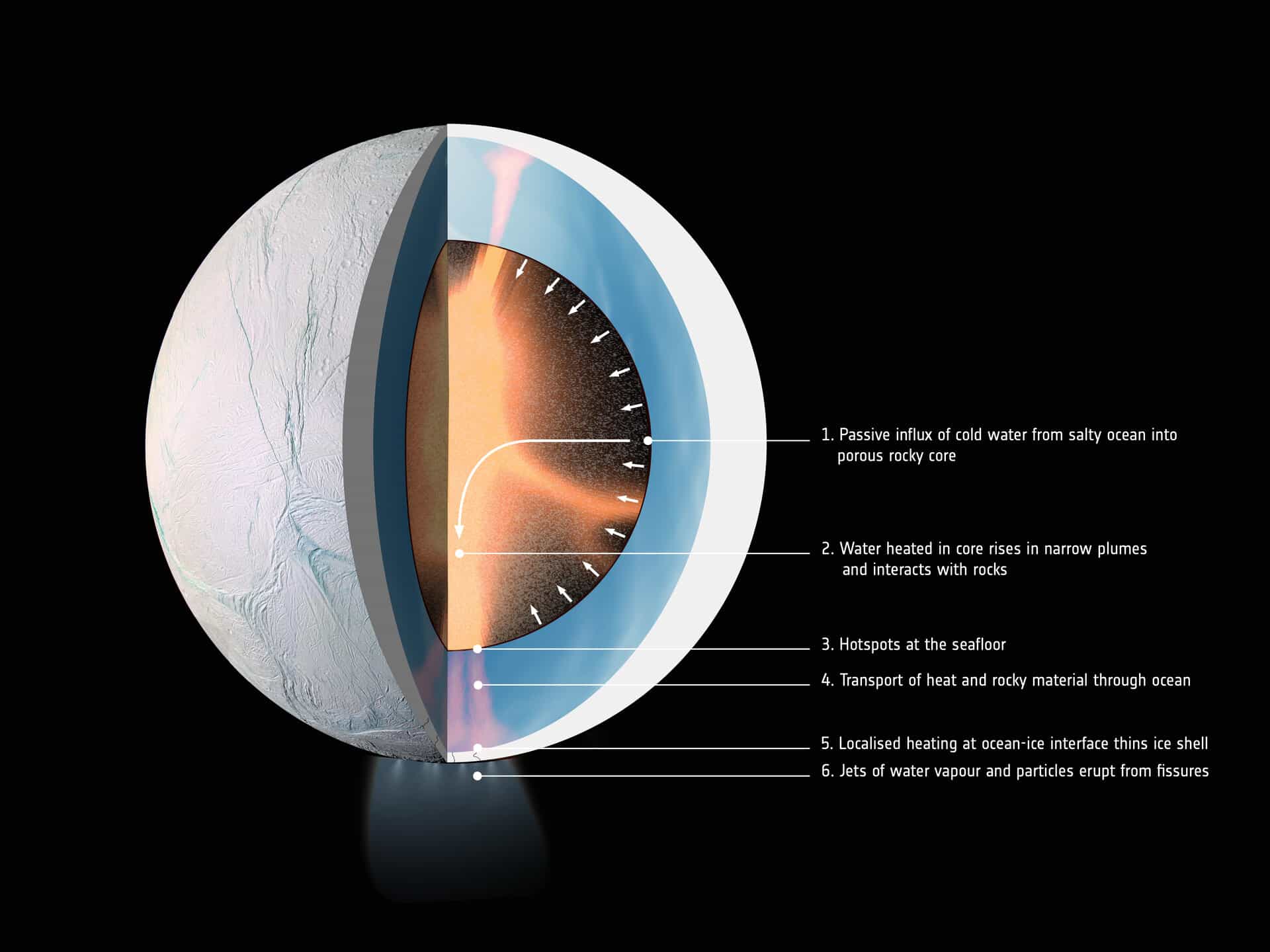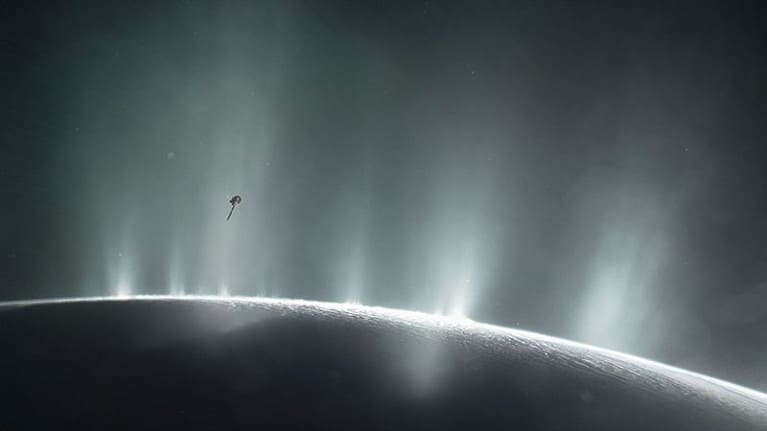Life as we know it can’t exist without water. But we already know that water exists beneath the surface of Enceladus — so astronomers are looking for more. Now, using data collected by the Cassini mission, astronomers report the existence of phosphorus (an essential chemical element for life) locked in the salt-rich ice grains ejected into space from Enceladus.

Water on Enceladus
Every life form on Earth contains six key elements: carbon, hydrogen, nitrogen, oxygen, phosphorus and sulfur. Enceladus seems to have all of these — which is super surprising.
Enceladus is Saturn’s sixth-largest moon and initially, astronomers didn’t give it much thought. Why would they? After all, it’s just a frozen moon far away from the Sun’s heat. But there’s more to this frozen moon than meets the eye.
Near its south pole, Enceladus has some impressive volcanoes. But unlike volcanoes on Earth, Enceladus’ volcanoes don’t spew lava — they spew water. They’re called ‘cryovolcanoes’ or frozen volcanoes, as their surfaces are made of ice. This hints that Enceladus has liquid water beneath its frozen surface.
Recently, astronomers have also found clear signs of key molecules coming out along with water. The water vapor plumes jetting from Enceladus’ south pole hints at an environment that could harbor life as we know it. These plumes contain complex organic molecules, the so-called ‘building blocks’ of life, which further amplifies the astrobiological significance of this distant moon.
Now, researchers at NASA have confirmed the existence of phosphorous on Enceladus, which is a big deal.
Phosphorous on Enceladus

As a kid, someone may have told you phosphorous is good for your bones. Phosphorous is present in the bones of all mammals, but that’s not all it does. It’s also a building block for DNA and plays a key role in cell membranes. Without phosphorous, life as we know it can’t exist.
During its mission from 2004 to 2017, Cassini flew through plumes from Enceladus numerous times. That’s when researchers discovered that the plumes contain the ingredients for amino acids — possibly, the ingredients for life. But until now, phosphorous hadn’t been discovered.
“We previously found that Enceladus’ ocean is rich in a variety of organic compounds,” said Frank Postberg, a planetary scientist at Freie Universität Berlin, Germany, who led the new study, published on Wednesday, June 14, in the journal Nature. “But now, this new result reveals the clear chemical signature of substantial amounts of phosphorus salts inside icy particles ejected into space by the small moon’s plume. It’s the first time this essential element has been discovered in an ocean beyond Earth.”
It gets even more tantalizing. Previous analyses showed that Enceladus’ ice contains sodium, potassium, chlorine, and carbonate. If its subsurface water also contains these elements (and phosphorous), it hints at a life-friendly chemical environment.
“High phosphate concentrations are a result of interactions between carbonate-rich liquid water and rocky minerals on Enceladus’ ocean floor and may also occur on a number of other ocean worlds,” said co-investigator Christopher Glein, a planetary scientist and geochemist at Southwest Research Institute in San Antonio, Texas. “This key ingredient could be abundant enough to potentially support life in Enceladus’ ocean; this is a stunning discovery for astrobiology.”

However, while all this hints at Enceladus’ potential habitability, there’s nothing to say whether life truly exists there. Or even if it can exist at all.
“Having the ingredients is necessary, but they may not be sufficient for an extraterrestrial environment to host life. Whether life could have originated in Enceladus’ ocean remains an open question,” Glein points out.
Life in unexpected places
Nevertheless, this is very exciting news not just for Enceladus, but also for some of the other frozen moons in our solar system. Increasingly, astronomers and astrobiologists are looking at places like Europa or Ganymede as potential harbors of life. These moons are far from the Sun and their surface is frozen, but they have liquid water under the ice. This water is kept liquid by the stress exerted by their host planet, which generates friction and heat.
With water and key chemical elements, the celestial bodies that were long thought to be unfriendly and barren are progressively revealing their possibilities. Enceladus, Europa, Ganymede, and maybe many others may provide clues to the origins of life beyond our blue world. The finding of phosphorus is simply another step forward in this journey of discovery. It’s not simply about the existence of one ingredient, but about recognizing an environment in which the fundamental elements of life interact.
“This latest discovery of phosphorus in Enceladus’ subsurface ocean has set the stage for what the habitability potential might be for the other icy ocean worlds throughout the solar system,” said Linda Spilker, Cassini’s project scientist at NASA’s Jet Propulsion Laboratory in Southern California, who was not involved in the study. “Now that we know so many of the ingredients for life are out there, the question becomes: Is there life beyond Earth, perhaps in our own solar system? I feel that Cassini’s enduring legacy will inspire future missions that might, eventually, answer that very question.”









